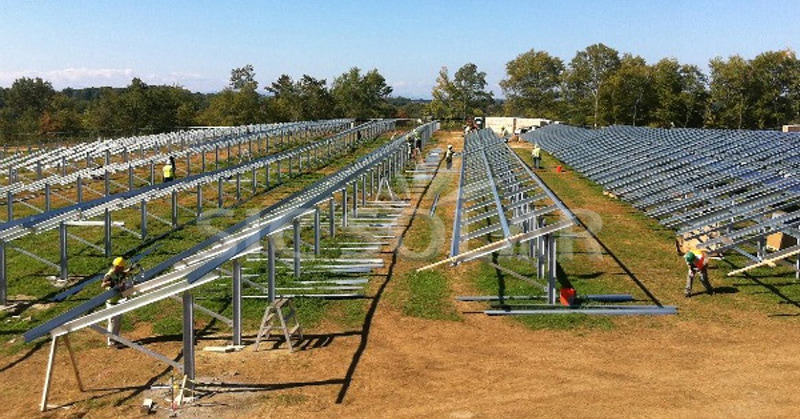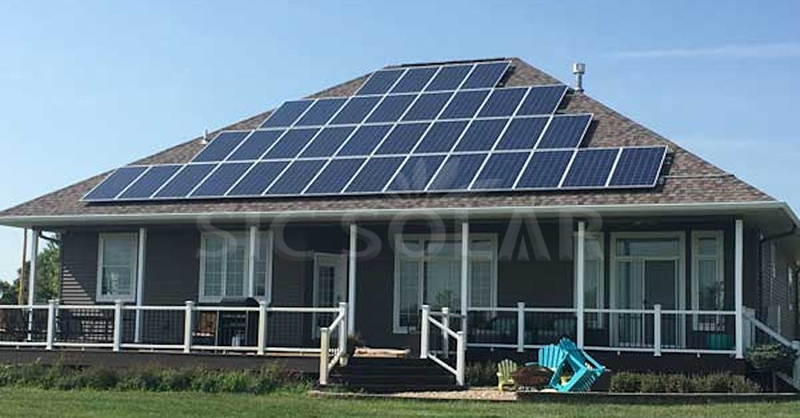A solar mounting structure is the backbone of any solar energy system, ensuring that panels are safely and sturdily in place, angled correctly to soak up the sun's rays, and shielded from the elements. These structures form the base upon which solar panels rest, whether they're perched on rooftops, standing on the ground, or integrated into carports. Choosing the right mounting system is pivotal, as it directly affects the performance, efficiency, and lifespan of your solar array.

What is a Solar Mounting Structure?
A solar mounting structure is the hardware that physically supports and secures solar panels. It's designed to position the panels at the best angle for capturing sunlight and to protect them from the elements like wind, rain, and snow. The system also ensures the panels stay put over time, preserving their durability and stability.
These structures can be adapted to various surfaces, such as roofs, open ground, walls, or poles, depending on the installation type and available space. They must be designed to handle the weight and size of the solar panels while keeping them properly aligned for peak efficiency.
Key Components of a Solar Mounting Structure
-
Rails: These are the long, horizontal components that run across the roof or ground, serving as the base for attaching solar panels. Typically made from lightweight yet durable materials like aluminum or stainless steel, rails hold the panels securely and often feature adjustable mechanisms for changing the panel's angle or orientation.
-
Mounting Brackets: These connect the solar panels to the rails. They're specially designed to provide a stable platform for the panels and allow for easy removal or adjustment. Made from materials like aluminum or stainless steel, mounting brackets ensure corrosion resistance and strength.
-
Solar Panel Clamps: Clamps are used to secure the solar panels to the mounting rails. There are end clamps for the edges of the panels and mid clamps for the middle sections. Clamps keep the panels tightly in place, preventing movement due to wind or other environmental factors.
-
Ballast Systems: For flat-roof installations, ballast systems use heavy materials like concrete blocks to weigh down the panels without the need for drilling into the roof. These systems are ideal for installations where roof penetration is not desired.
-
Roof Hooks or Ground Screws: Roof hooks anchor the mounting structure to the roof's rafters for rooftop installations, while ground screws secure the structure to the earth for ground-mounted systems. Ground screws are a good option for unstable soil conditions or where concrete pouring isn't feasible.
Types of Solar Mounting Structures
-
Roof Mounted Systems: Common in both residential and commercial properties with strong, spacious roofs, these systems use roof hooks or rail systems to secure the structure to the roof.
- Advantages: Space-saving, doesn't occupy ground space, and is generally less expensive than ground-mounted systems.
-
Ground Mounted Systems: Suited for properties with ample land, these systems are installed directly into the ground using concrete foundations or ground screws.
- Advantages: Easy access for maintenance, can be positioned for optimal angle, and ideal for large-scale installations.
-
Ballast Mounted Systems: Designed for flat roofs, these systems use heavy materials to hold the panels in place without penetrating the roof.
- Advantages: No roof penetration to prevent leaks, flexible installation, and reduces roof damage risk.
-
Pole Mounted Systems: Installed on tall poles, these systems can track the sun's movement, typically used in commercial or agricultural settings.
- Advantages: Flexible positioning and tracking, suitable for areas with limited rooftop space.
How SIC Solar Mounting Solutions Enhance Solar Installations
SIC Solar offers a broad range of innovative mounting systems that optimize solar installations for residential and commercial projects. Whether on a roof or the ground, SIC Solar ensures secure, efficient, and cost-effective installations.
-
Versatility and Customization: SIC Solar systems accommodate various roof types and materials, with adjustable features for optimal tilt and orientation, maximizing panel efficiency.
-
Durability and Reliability: Crafted from high-quality materials like aluminum and stainless steel, SIC Solar structures are corrosion-resistant and can handle extreme weather, ensuring long-term durability.
-
Ease of Installation: With pre-assembled components and clear instructions, SIC Solar systems are designed for easy installation, catering to professionals and DIYers alike.
-
Sustainability and Efficiency: SIC Solar systems are sustainable, securely mounting panels while minimizing environmental impact, and increasing the system's overall energy output for a greener future.

